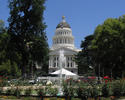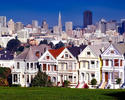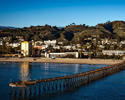For months the conventional wisdom among Democrats, amplified by their obliging claque in the media, was that lockdowns played an essential role in containing COVID-19. The great heroes, in addition to Anthony Fauci, were hardline governors like Michigan’s Gretchen Whitmer, California’s Gavin Newsom and, most of all, New York’s Andrew Cuomo. read more »
Los Angeles
The California Economy vs. Sacramento
Over the past few years California’s plight has taken on mythic proportions — a cautionary tale of progressive woe among conservatives, but a beacon for a future enlightened capitalism among its woke supporters. The current battle over the potential recall of the preening governor, Gavin Newsom, likely will enhance these extreme interpretations on both sides, but likely will not be sufficient to make the changes needed to restore the state’s legendary promise. read more »
- Login to post comments
Reasons People Are Moving From Los Angeles to Dallas — More Important Than Escaping Higher Taxes
Californians escaping high taxes dominate the real estate news. Yes it is true, leaving California because of high city, county and state income tax for Dallas and Texas, with no income tax, is a motivation, but last on my list of seven reasons why people are moving from Los Angeles to Dallas. People will pay more to live where they like living, whether that means higher taxes, higher home prices or higher cost of living. People will leave a place they do not enjoy if they can afford to. This is the case with Angelenos. Residents have found Los Angeles increasingly unpleasant. read more »
Why More Americans Should Leave Home and Move to Other States
America has been lazily divided by pundits into red and blue states, as if there weren’t constant movement of people between them. Fortunately, reality is a lot more purple — and hopeful — as immigrants, people of color and millennials reshape parts of America by voting with their feet and moving.
These demographic groups are migrating from the big coastal cities to the suburbs, the interior cities, the South and even parts of the Midwest. And in the process, these newcomers change both their new homes and are also changed by them. read more »
- Login to post comments
SoCal Desalination Plant Inches Towards Approval
In a rare and commendable display of political courage and common sense, California Governor Gavin Newsom has been working to finally grant permits to construct a second major seawater desalination plant on the Southern California Coast.
But don’t count on this new water source just yet. Despite clearing major hurdles, self-described environmentalists and their allies in the media haven’t surrendered. read more »
- Login to post comments
Tale of Two Middle Classes in SoCal
Anyone who’s not concerned about the state of the middle class in SoCal should consider recent public notices on a pending auction of the Plaza Mexico retail center in Lynwood a wake-up call. read more »
The New American Judaism
Ever since God chased Adam and Eve from Paradise, the Jewish experience has been defined by constant movement. In the past 3,000 years Jews shifted from a small sect escaping exile in Egypt to a national Temple-based model, then to a Talmudic diaspora, hunkered down in European ghettos and shtetls. That was followed by waves of migration at the turn of the 20th century that inaugurated a new promised land in America and over 100 years of Jewish American advancement organized around what became a lavish institutional Judaism. read more »
‘Call Your Mother’ Sitcom Is Coastally Out of Step
Call Your Mother is lame enough as it is. But a major extra shortcoming of ABC’s latest sitcom, which recently debuted with a pilot episode, is that one of its foundations is a banal juxtaposition of Flyover Country with the coasts.
Get this: A central premise of the show is that an empty-nester widow moves to Los Angeles from Iowa to be near her two adult kids who like living in California right now. In that important regard, Call Your Mother is so, well, 2019 – and so heedless of the current zeitgeist.
read more »- Login to post comments
California and Urban Cores Dominate Overcrowded Housing
Concern about overcrowded housing has been heightened by its association with greater COVID-19 infection risk. As a disease transmitted by human proximity, exposure is increased by being in overcrowded and insufficiently ventilated spaces where sufficient social distancing is not possible. Exposure density for a person is intensified by the amount of time spent in such circumstances. read more »
- Login to post comments
Pandemic Changes More Than Where We Work and Live
Pandemic Changes Congestion
Until the pandemic, people’s choices were largely shaped by their workplaces and commutes. A 25-minute drive to work could become an hour and a half at rush hour. read more »






















